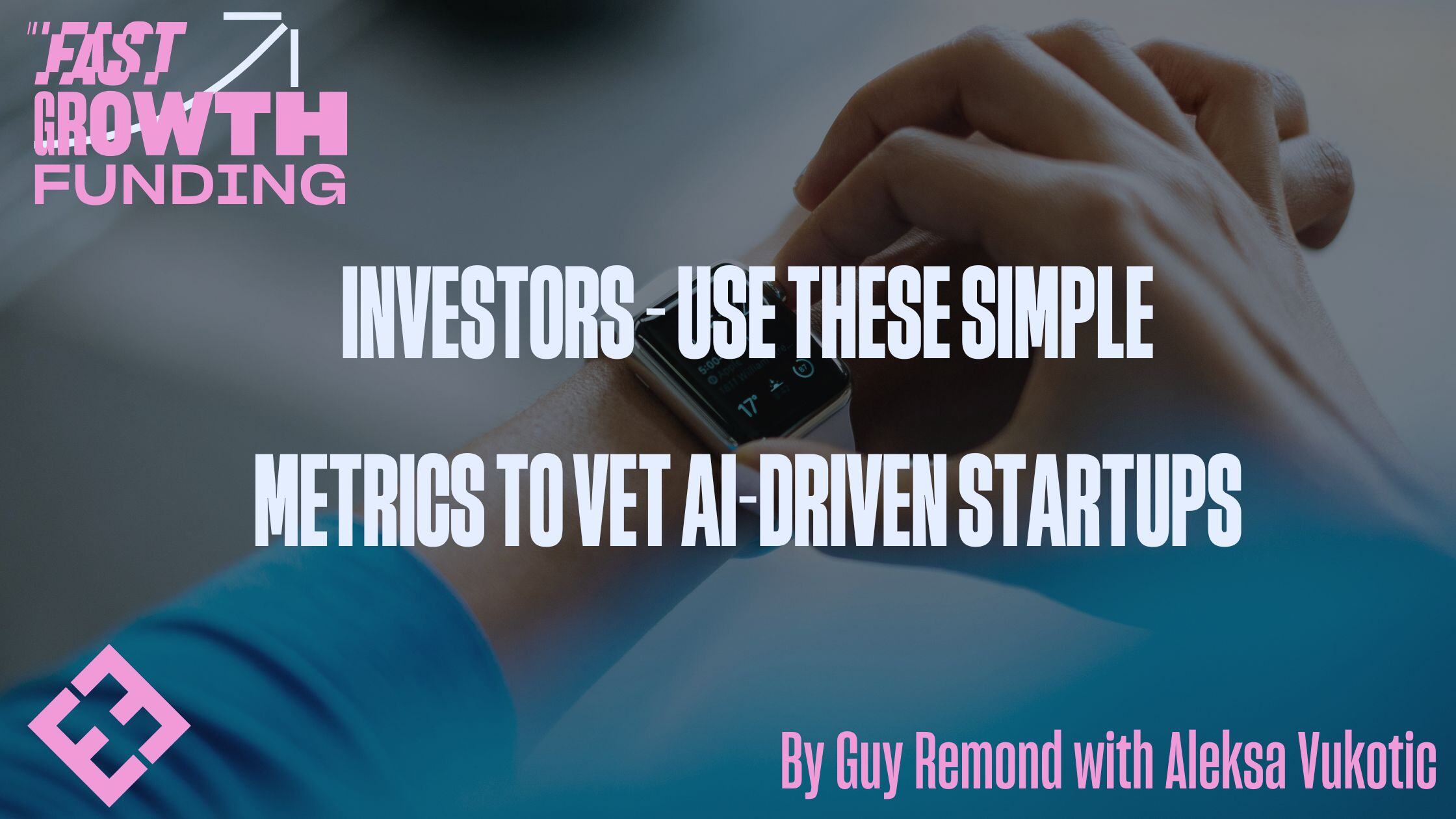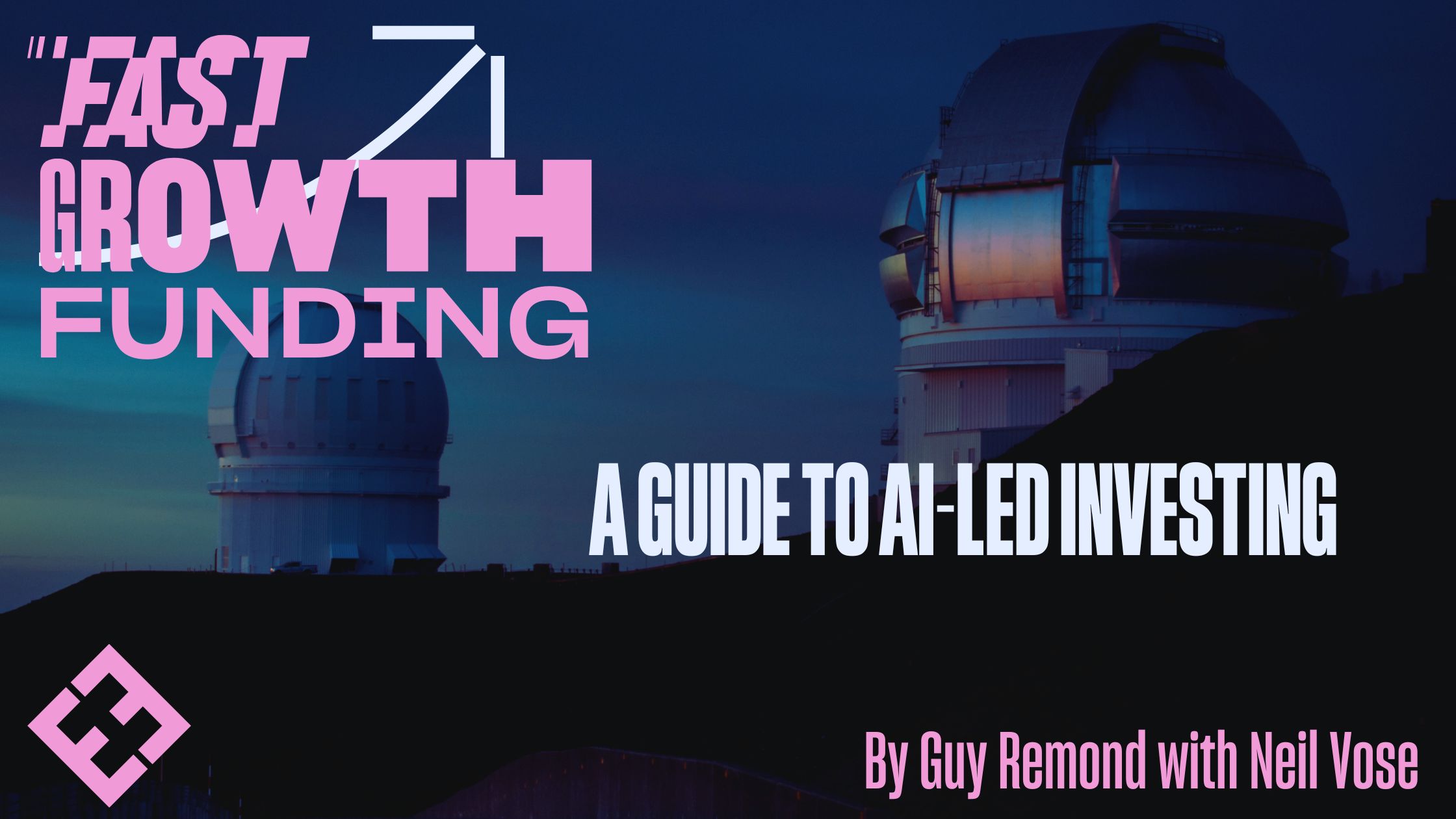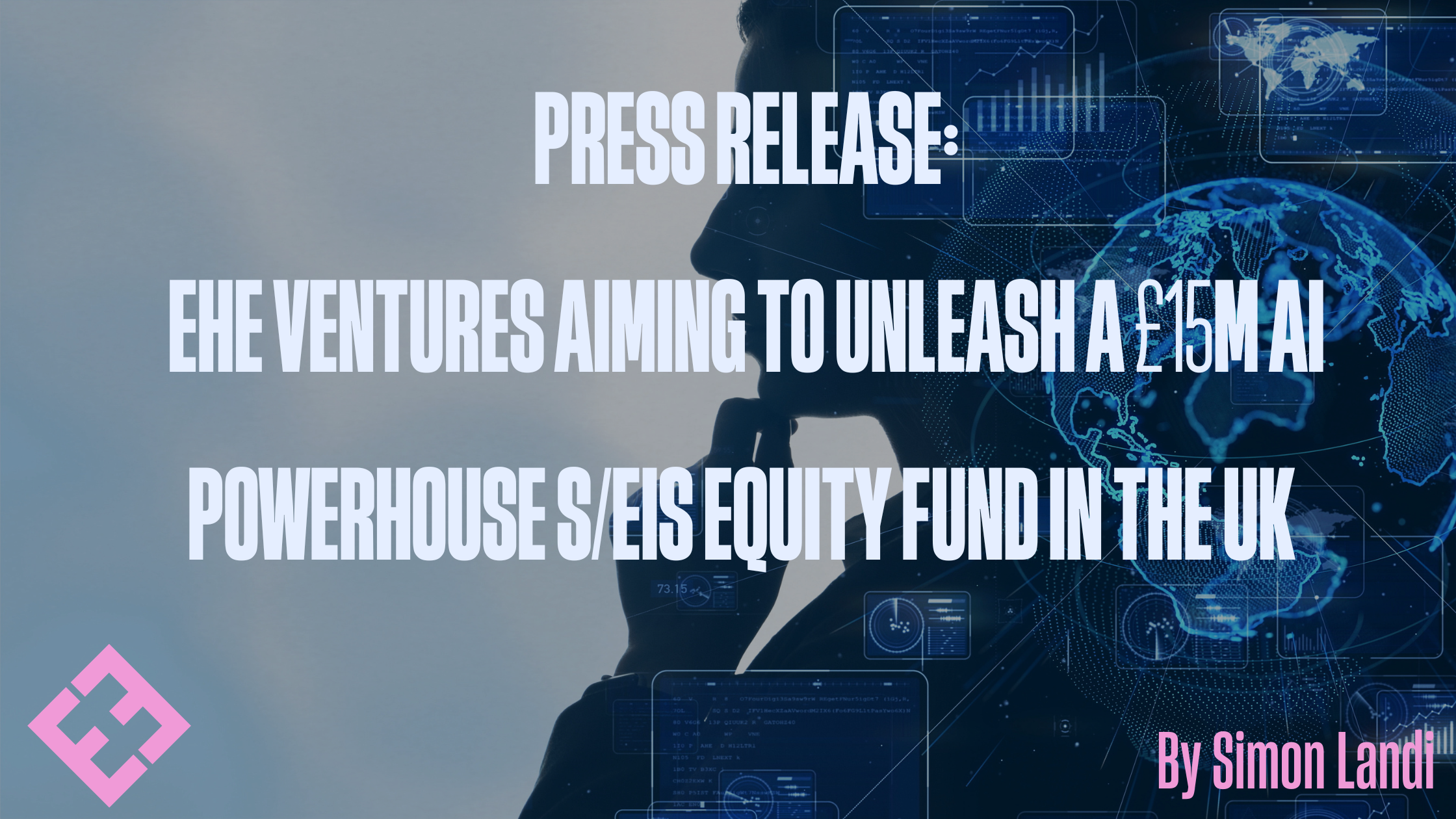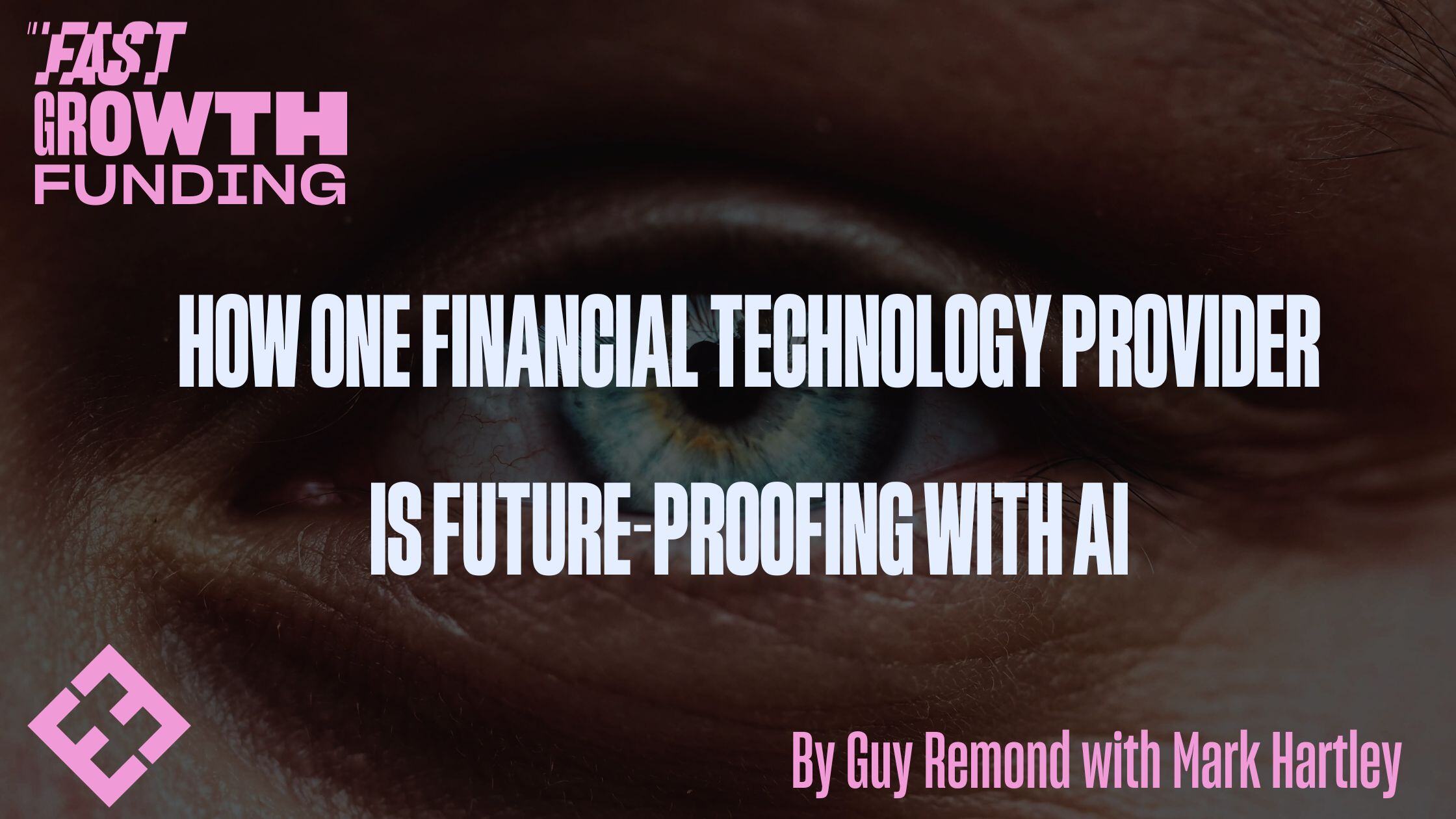Fast Growth Funding: A Guide To AI-Led Investing
By Guy Remond with Neil Vose
4 min read
Pete Evison : Dec 13, 2023 10:15:58 AM

Previously, we talked about AI investments and how AI-driven opportunities will frame the future of investing.
However, for some investors who don’t come from a “techie” background, vetting these opportunities can be daunting. How do you sift the fluff from true potential?
On the latest episode of Fast Growth Funding, Aleksa Vukotic, the CTO of thestartupfactory.tech (TSF) and I tackled this important question.
In this blog, we’ll explore the key metrics to help you spot and back the next generation of AI successes, even if you’re not a techie yourself.
Look beyond the idea
Alongside our in-house specialist engineering team, thestartupfactory.tech, EHE has built and invested in multiple tech startups since its inception.
Over the years, one thing I’ve learned from our collective experiences is that great ideas don’t necessarily spell long-term growth. A tech founder might have the best idea in the world. But unless they have other factors in place – a solid team, high-growth strategy and the equipment needed to build and market the product – it could end up being a waste of time and investment.
Which is why the work TSF does is so important.
Aleksa: “There is only ever so much in the idea. When we conduct due diligence, we look at the team and the founders – their domain, knowledge, passion, vision and ability to send the message across to customers. We then come in as experienced technologists.
One thing we always want to see is technology being used to bootstrap successful businesses, and that’s TSF’s area of specialty. As an investor, you want to find out if the technology matches the expectations of the business. You need to look under the bonnet – and understand what you’re looking at. Because I’ve seen a lot of investors who have been burned by spending money on technology that didn’t end up anywhere.”
Don’t hop on the AI bandwagon
AI is full of complexities. While AI-led investing is on the rise, it’s easy for investors to get burned if they don’t know what to look out for. That’s why it’s important to ignore the hype and make sure you’ve dotted the i’s and crossed the t’s before backing any venture.
To make this easier, we’ve identified some key metrics to help new AI investors vet these opportunities.
1. Look at the business case and data
Aleksa: “There has to be a business case for whatever cutting-edge piece of technology you’re looking at. You can have the greatest product, but if it’s not really usable, then it’s not great.
One of the biggest challenges I’ve faced in tech was building what I thought was a brilliant piece of engineering without vetting its usability. In the end, there was no demand or business for it, which was a complete waste of time, effort and money.”
It’s equally important to assess the product’s data. Every AI model is based on the data upon which it’s trained. Which means it should be the first thing any investor needs to look at when vetting an AI-driven product.
Aleksa: “Is the data collected and managed in the right way? Are they managing versions, anonymizing things, and making sure the data is easily accessible?
Data is one of the main ingredients for success when it comes to AI-driven products, and it requires you to follow classic engineering practices. Anyone can have the greatest AI model. But if they don’t have the data to train it and then apply it on, then it’s moot.”
2. Understand the technical strategy
It’s essential that investors take the time to properly assess the long-term tech strategy and determine if it’s something they’re comfortable with. Beyond the business idea, how clear are you on their AI stance and long-term strategy?
Some founders might choose to leverage applied AI – using off-the-shelf APIs that are already out there to develop their minimum viable product (MVP) and proof of concept (POC). Others might want to build their tech capability straightaway for real innovation, which poses a bigger barrier to entry, but ultimately has better long-term growth potential.
And then, there’s a third category – which is probably the Goldilocks Zone for new investors. Tech startups that start off using off-the-shelf APIs and eventually learn how to build their AI capability themselves.
When vetting these startups, you want to ensure that you understand which side of the AI divide they sit on and how scalable their model is.
3. Understand the tech
It also pays to understand the tech itself, which is where technical expertise comes in. Aleksa brilliantly sums up what this involves and how TSF is bridging the gap.
Aleksa: “Technology can be a black box, and people [especially investors] need to understand it more. You need to know whether the business you’re investing in is being run on a scalable base that will allow for rapid growth without leading to unaccounted investments. You also need to know that you have the right secret sauce [tech] and the right process in place so you can actually deliver innovation going forward. And this is what the technical due diligence (DD) we carry out at TSF will highlight.”
Options for non-tech investors
Aleksa’s point brings us back to our original question. How can non-tech investors vet the tech opportunities and products before them?
I believe there are two options.
a. Liaise with an in-house technical team
First, you can liaise with an in-house technical capability. One of the advantages EHE Ventures has as an investor is the technical capability we have in the form of TSF. We have a team of practitioners who carry out technical due diligence day in and day out.
So, we can not only assess the idea and the team, but we can actually build out the MVP/POC. This gives us the reassurance that the software is well-designed and well-engineered, which is a massive advantage when you’re investing in any company.
If you’re investing in a tech product, whether it’s AI or not, you need to understand if it’s scalable and what is required to not only build the MVP, but to scale it over the next couple of years.
b. Outsource due diligence
There’s also the option of outsourcing the Due Diligence (DD) process to a technical company that fully understands what it takes to spot potential and mitigate the risks from a technical point of view.
A lot of investment decisions – especially within the new AI minefield – are made without really looking at the tech. I believe this is a recipe for disaster.
You want to work with people with in-depth technical knowledge and expertise – techies who have been there and done that several times over. Because, at the end of the day, investing is all about mitigating as much risk as possible. Giving yourself the best opportunity to make healthy profits from your investments.
I hope this blog has answered any questions you may have about backing AI-led opportunities as a non-tech investor.
If you do have any questions or would like to receive relevant, viable deals at your fingertips, join our Investor Platform today.
P.S. We’re launching a new EIS-qualified fund for UK-based early-stage and growth AI investments. To find out more, register your interest here.

By Guy Remond with Neil Vose

By Simon Landi

By Guy Remond with special guest Mark Hartley